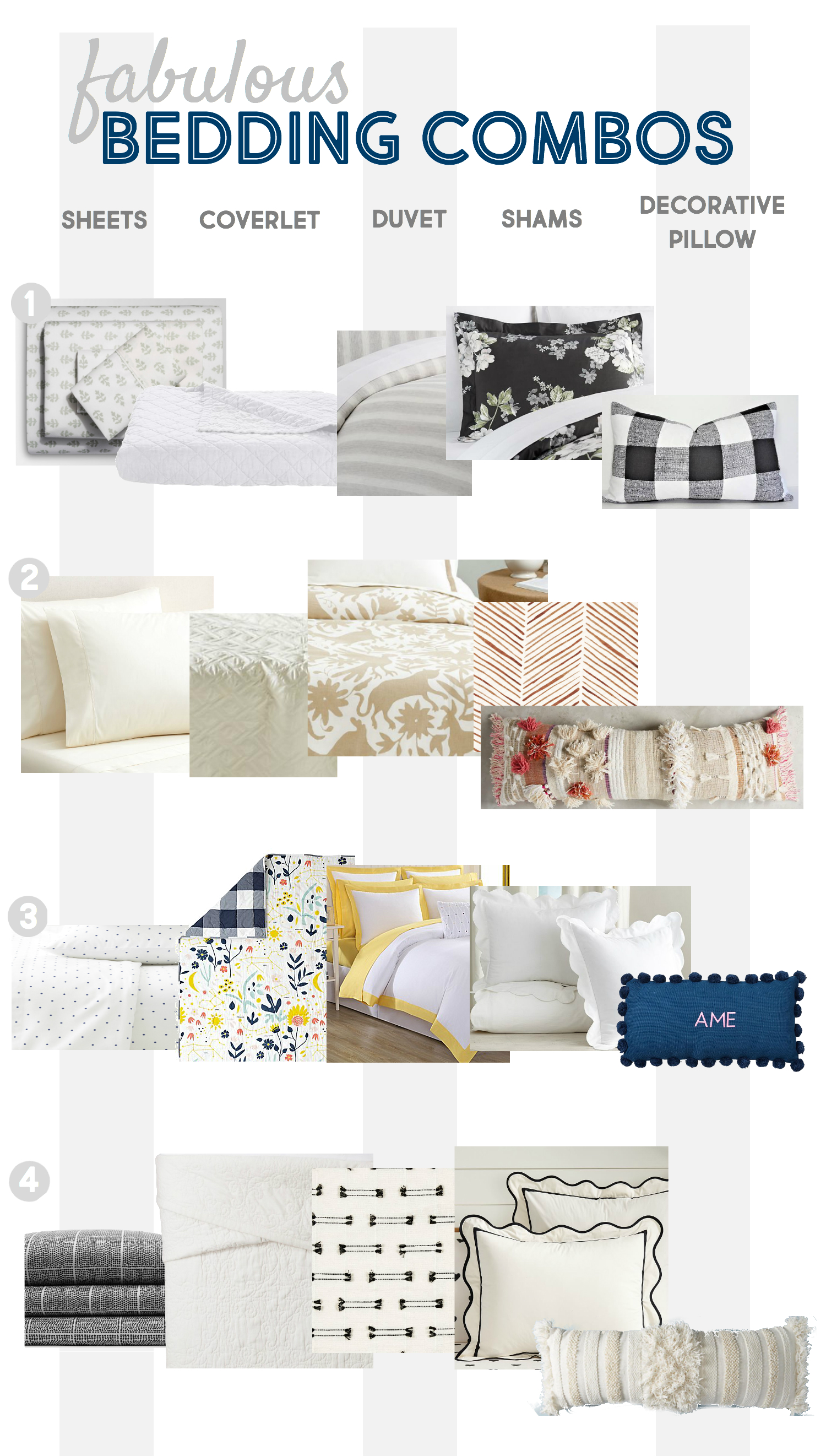Last week I shared details on how to create an irresistibly comfy bed, and I’m back now to share exactly how to mix bedding to achieve a designer look. The last thing you want is a dull, matchy-matchy bed, right?! I’ve pulled together some gorgeous sets that are sure to elevate the look of the beds in your home, but I also want to share some wisdom on how to create the look yourself.
Three Tips For Mixing Bedding
1. Utilize Varied Sources
Spoiler Alert: This is actually my number one tip in the Authentic Home Free Guide (grab access here). Combining sources automatically ensures you will have a unique, more authentic space. Choose one favorite piece and look for the next piece based on the color(s) in the first. Then, keep adding pieces that relate, using the next tips.
2. Mix Scale of Patterns
Let’s say you pick the Shams first. Let’s use the number 1 combo from the images below as an example. The black floral pattern in the shams is medium-large scale and organic in nature. So, when looking for the sheets I chose a different scale (a small scale graphic pattern). Next, I chose a medium scale graphic stripe for the duvet, then a solid for the coverlet, and a large scale graphic for the decorative pillow.
[For this discussion, “organic” refers to patterns that have fluid movement like a floral or botanical type print. “Graphic” patterns typically have straight lines that repeat regularly.]
Try to represent graphic AND organic, small AND large scale, as well as a solid in your combos. Texture is a great way to add depth and interest (pompoms, tassels, faux fur, velvet, etc.).
3. Repeat Colors
It’s best to choose the “busiest” piece first. Presumably it will have more than one color. Use one of those colors to inform the next selections. This is what will tie your selections together. It’s not necessary for each piece to have every color represented. But, each piece DOES need to relate to something else you’ve already chosen.
For instance, in number 2 below, the Otomi duvet cover only has ivory and beige. The herringbone shams have ivory and rust. And the textural lumbar pillow has all three, tying the look together. (You might also notice the varied scales of pattern as well as the presence of organic + graphic patterns.)
Of course, there are always exceptions to the rule. Learn the rules well, then you’ll know how to break them. Isn’t that what they say?
To get the full lowdown on making an irresistibly comfy bed, click here. Be sure to grab the cheat sheet which outlines exactly what pieces, what size to get, and how many depending on the size of the bed you’re dressing. Enter your info here for that.

1. Sheets (Sage ) | Coverlet (Eggshell White) | Duvet Cover (Smoke) | Shams | Decorative Pillow
2. Sheets (Ivory) | Coverlet (White) | Duvet Cover (Natural) | Shams (Rust) | Decorative Pillow (Pink)
3. Sheets | Coverlet | Duvet Cover (Sunflower) | Shams | Decorative Pillow
4. Sheets | Coverlet | Duvet Cover (Ivory/Black)| Shams | Decorative Pillow

5. Sheets (Black/White) | Coverlet | Duvet Cover | Shams (Coral) | Decorative Pillow (Navy)
6. Sheets (Tahoe Khaki) | Coverlet (White) | Duvet Cover | Shams (Gray) | Decorative Pillow
7. Sheets | Coverlet | Duvet Cover | Shams | Decorative Pillow
8. Sheets | Coverlet (White) | Duvet Cover | Shams (Palm Green) | Decorative Pillow
There you have it, folks! I’d love to know if you have any extra tricks to mixing bedding. If you’re still stuck and need an extra set of eyes on your bed, let’s do a General Consultation! We can come up with a custom look for your bed.
